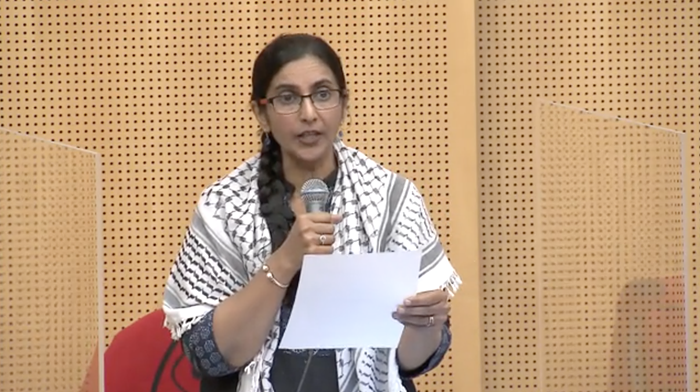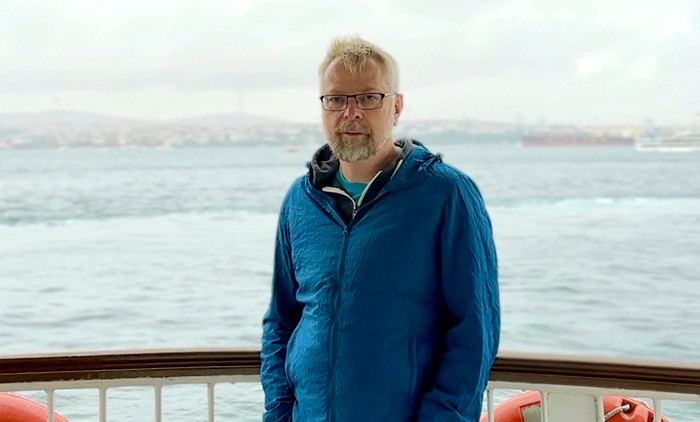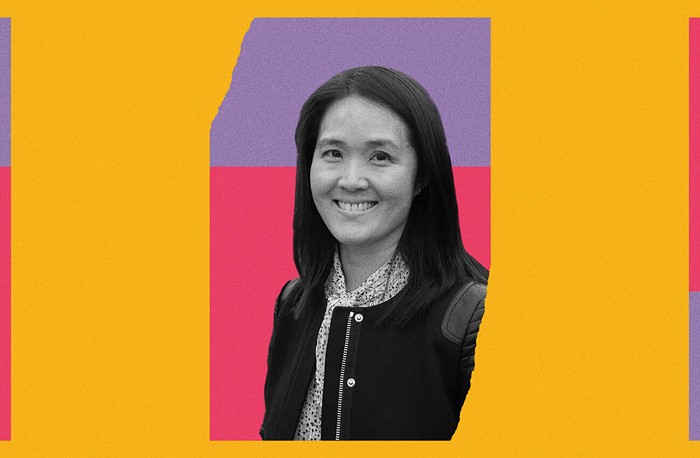By contrast, most people in Seattle weren't aware of Bay Press when it was active, although Bay Press published works by prominent writers like Cornel West, Margaret Atwood, bell hooks, and Dennis Cooper. Yet somehow this local company with national prominence failed to register as a local cultural institution during its lifetime. And in "death" (or weird limbo--more on this later), Bay Press hasn't been mourned alongside other late, great cultural institutions like Gorilla Gardens or the Monastery or KRAB or the call letters KCMU. The strange disappearance of Bay Press somehow failed to generate any comment at all. As far as we can determine, this is the first piece written about the founding, success, sale, and current silence of Bay Press.
The Beginning
The story of Bay Press begins in Seattle with three boys--Thatcher, Hal, and Charlie--who attended, in the late '60s, a well-known private academy called Lakeside School. All three boys were the sons of well-to-do parents. Thatcher's father, Philip Bailey, owned Olympic Stain, a Ballard-based company which made (and still makes) wood-finishing treatments. Philip Bailey also began the Seattle magazine Argus, a weekly opinion journal for local movers and shakers. (Thatcher's sister Barbara Bailey owns Bailey/Coy Books on Broadway.) Hal Foster's father was a partner in the distinguished Seattle law firm Foster Pepper & Shefelman.
Charlie Wright is the son of Seattle philanthropists Virginia and Bagley Wright. (Bagley Wright was one of the five major private investors in the Seattle Space Needle.) While at Lakeside in the '70s, Thatcher, Hal, and Charlie had schoolmates like Bill Gates and Paul Allen. "Bill Gates is a year younger than me," Thatcher told The Stranger. "He was in Hal's class."
After Lakeside, the three boys, now young men, headed in the only proper direction--East--to complete their education. Charlie and Hal went to Princeton, and Thatcher attended Amherst. (Bill and Paul wound up at Harvard.) Their friendship deepened after college. "You know how you are when you're 23, 24, 25," Hal Foster said to The Stranger. "We would just meet almost every day and see shows and movies and quack away and debate things, and chase the world."
While in their mid- and late 20s, all three attained positions in prominent art institutions and companies. Charlie Wright became the executive director of the Dia Center for the Arts--known then as the Dia Foundation for the Arts--a prestigious arts institution in New York. Hal Foster became an instructor at the Whitney Program--an offshoot of the Whitney Museum--and editor of Art in America magazine. And after a brief stint at a New York bookstore, Thatcher went to work for Simon & Schuster.
Bay Press was born in New York City, when Thatcher decided to publish Hal Foster's book, A Mink's Cry, a children's story. "I still have a lot of them somewhere in an attic," Thatcher says now. "I actually moved back from New York with a big load of [A Mink's Cry] in my car, doing this zigzag trip across the country trying to hand-sell these things to bookstores." Thatcher's final zag brought him into Port Townsend, where he began working for Centrum, an arts foundation that hosts reading series and literary workshops.
"And then," Thatcher says, "Hal had this other idea." That idea was the book The Anti-Aesthetic: Essays on Postmodern Culture.
"The children's book," explains Hal Foster, "was more of a lark. I mean, I think he [Thatcher] wanted to get into publishing, and it was an easy enough first book to attempt. I'm very grateful that he did it, but it's funny, I don't think many people know that I ever did a kids' book."
The Anti-Aesthetic was one of the first critical texts to define postmodern concerns and address the implications of the theoretical work of French intellectuals like Derrida, Barthes, and Foucault. Bay Press published the book on a shoestring budget, and it met with wild success. For New York City's art elite and serious art students around the country, The Anti-Aesthetic was a landmark. It was championed by the Village Voice Literary Supplement (VLS) and founding editor M. Mark. In the October 1983 issue of VLS, she ran a long introductory review of The Anti-Aesthetic written by the sociologist Stanley Aronowitz. Aronowitz's article, which described The Anti-Aesthetic as a "pioneering attempt to establish a 'postmodern resistance,'" was a delirious affirmation of the themes and theories within the book.
"The Anti-Aesthetic," says Hal Foster, "is what put Bay Press on the map.... The book had art critics and cultural critics like Fredric Jameson and Edward Said. And it was the first text by Jean Baudrillard that most Americans had read. It became a bestseller in independent bookstores. And that, I think, encouraged Thatcher to go on with other kinds of titles in criticism."
The Glory Years
"I was in New York from 1981 to 1988,"
says Matthew Stadler, former books editor at The Stranger and current literary editor of Nest magazine. "In New York, Bay Press was extremely visible. I remember seeing Hal Foster's book, The Anti-Aesthetic, and it was thrilling. It was clear, smart writing about critical theory." Stadler was puzzled to learn that Bay Press was based in Seattle, the city where he grew up. "When I [moved back to Seattle and] met Thatcher and discovered he was publishing his friends, I was surprised. I thought it was an empire."
Bay Press was an empire, if only a one-man empire. It became the home for some of the best postmodern theorists, publishing books for intellectuals who wanted to absorb the works of the French and German big guns--Derrida, Spivak, Lacan, Habermas, et al. Postmodernism is a complex, slippery, and often unreadable theory, but through Bay Press its ideas were democratized and disseminated. Though Bay Press published several successful books--indeed, Thatcher can only recall two unprofitable books, Line Break: Poetry as Social Practice (1988) and a book on terrorism called Violent Persuasions (1993)--their cash cow was Hal Foster's The Anti-Aesthetic. Foster's second book, Recodings, published in 1985, was Bay Press' second most successful title.
Bay Press also had a rewarding collaboration with the Dia Foundation, whose executive director, as we pointed out earlier, was Charlie B. Wright, a longtime friend of Thatcher Bailey and Hal Foster. At Dia, Wright began a series of celebrity-heavy symposiums featuring the likes of Salman Rushdie, Walter Mosley, Alice Walker, and Margaret Atwood.
"Charlie and I did a series of panels in '86, '87, '88, '89 that were sponsored by the Dia Art Foundation," explains Hal Foster. "And Thatcher published [the papers and speeches delivered at the panels], and some of them did well. Not quite like The Anti-Aesthetic, but they did circulate."
One successful Dia Foundation book, for example, was Discussion in Contemporary Society (1989); it sold 15,000 copies--big numbers for a small press.
Novelist, essayist, and former VLS critic Lynne Tillman describes the Dia/Bay Press collaboration as very exciting, and important. "These Dia discussions and the documentation from Bay Press," said Tillman in a phone interview, "was really kind of like making an archive of the moment. You knew these discussions were significant. You'd go to them with a sense of their importance. It was important that they were then published and disseminated outside to smaller communities."
Though Bay Press was publishing the big names in the postmodern market, it was not a sophisticated operation, but functioned as a small business with only one part-time employee and Thatcher Bailey. "I would get up in the morning," he says of those early and bright years, "walk up to this little office upstairs, and fill orders. I had this first-generation computer to help me. Then things kind of grew.
"The Anti-Aesthetic and Recodings," Bailey adds, "did well, and then the [Dia] discussions series did well. As long as I kept to those audiences, there was a built-in universe of people who were interested in reading the work. Universities--that was the big audience because of the course adoptions [i.e., when a book becomes required reading for a university course]. The course adoptions are what kept the press alive financially, and the certain urban bookstores who catered to people interested in those topics. There were enough people in those days who were interested in those topics."
Invisible Glory
Despite its influence and fame, Bay Press seemed invisible to Seattle. There were a few write-ups, and readings at Elliott Bay Book Company, but essentially the press was not celebrated or deemed a prized city treasure. There are many theories on why this occurred. Matthew Stadler, for instance, believes that it had much to do with the University of Washington's failure to play a significant role in Seattle's cultural life. "Seattle has such a big black hole in the university," says Stadler. "When a university is aggressively absent from public life, it is no surprise that critical theory has no civic vitality."
Thatcher sees it another way: He believes that Bay Press had very little to do with Seattle because "it was really a New York press." "There weren't local writers involved, really, and we sold books [in Seattle] but it wasn't our core marketplace. It was more of a New York-based core."
Hal Foster blames Seattle's inability to recognize the press on the city's immaturity and backwardness at the time. "Bay Press' prominence occurred before Seattle became an ultra-hip city," Foster explains. "Bay Press happened before Seattle attracted a whole other kind of young community. In other words, it may have worked now, but in the late '80s, early '90s, maybe there wasn't the critical mass locally to support it."
The Big Sale
The inauguration of William Jefferson Clinton in 1993 brought the Reagan era to an end. It was also the end of an old and isolated Seattle. The city became internationally visible during its fourth economic boom, which was coupled with a cultural explosion in the form of the Seattle music scene. Finally, 1993 was the year that Thatcher Bailey sold Bay Press to a pair of wealthy Microsoft entrepreneurs.
Thatcher Bailey, then in poor health, could no longer manage the press, which was still very successful. Indeed, one of the last books Bay Press published with Bailey at the helm was Black Popular Culture, a groundbreaking collection of essays that boasted a roster of superstars from Black academia and the arts. The book sold 10,000 copies, and was an instant classic in the field of cultural studies. (This success, however, was not shared with the co-editor of the book, Michelle Wallaca, who is bitter about what she was paid for the book. "I signed some wretched contracts in [my] time as a writer," Wallace told The Stranger, "but the Black Popular Culture contract was the all-time low.") And The Anti-Aesthetic, still Bay Press' most famous book, was in circulation, being studied by students in graduate programs all over the world.
"I sold Bay Press to the people with the check," says Thatcher Bailey. The people with the check were a couple of Microsoft millionaires--Sally Brunsman and Kim Barnett. According to a former employee, the women had plans to publish books with more mainstream appeal. Though Thatcher Bailey claims he sold the company for cold cash, don't let the fact that Bailey sold his small, influential press to a pair of Microsoft millionaires lead you to question his judgment. While the sale may seem foolish in retrospect, back in 1993 people in the New Economy were believed to be smarter than the rest of us; if anyone could transform a small press into a thriving publishing powerhouse, certainly two people who made a fortune in the New Economy could do it. Obviously, people's opinions have changed. The tech collapse redefined the tech archetype; no longer were all tech millionaires geniuses who minted money.
The New Era
Initially, things went well for the new Bay
Press. In 1994, Brunsman and Barnett published an exciting and successful book, funded by the Dia Foundation, called Culture on the Brink. This book was a product of the Bailey/Foster/Wright years, but in 1995 Brunsman and Barnett published a book by Nina Felshin called But Is It Art?--a fine anthology about activist art. The book sold very well.
"I had written an essay that was in [a] Bay Press book about terrorism called Violent Persuasions," Nina Felshin tells The Stranger. "The book described a certain phenomenon, and I got a call one day from Sally Brunsman saying: 'Is this a phenomenon? Does it exist out there? Do you think there's enough information about groups doing this kind of art to do a book?' And I said yes, and they asked me to submit a proposal. The book was published in 1995. [Brunsman and Barnett's] marketing was great, and the book was a huge success and got tons of reviews. It even printed a second time [in 1996]."
The Mystery
By 1997, however, the sun set on the happy and prosperous relationship between Felshin and Bay Press. Nina Felshin explains: "I'd [get] these yearly statements about sales, and it was coming time for me to get royalties, or at least it certainly seemed that way, because the right number of books had been sold. And then all of a sudden it was impossible to reach [Brunsman and Barnett]. Overnight, it happened overnight. They didn't respond to anything. I left messages, and the box was always filled up. I had other people who had written [books] for them getting in touch with me, saying, 'What's going on?'"
Around the same time Felshin was having trouble contacting anyone at Bay Press, an employee of Bay Press--which, at that time, had two employees--contacted Matthew Stadler at The Stranger.
"I got a call from a former employee saying Bay Press was in trouble, was essentially being shut down by its owners, who wanted to do it quietly so no one would notice," recalled Stadler. "When I finally talked to Sally Brunsman, she said that my information was wrong. They had titles in production, and [she] asked me not to write a story because it would make a false impression that Bay Press was falling apart."
But Bay Press seems to have ceased operation around fall of 1997, an event that passed unnoticed. As far as we can tell, no news stories were written, no public documents were filed. No one at the top will talk. Even Thatcher Bailey--a willing and open interviewee--didn't want to discuss anything that happened after the sale. As for former employees, they all seem to be afraid to speak on the record.
But Nina Felshin, who teaches at Wesleyan University in Connecticut, was able to provide The Stranger with some information about Bay Press' darkest hours. On April 25, 1998, she received a strange but revealing letter from Bay Press, which she read over the phone.
"Enclosed is a sale statement for But Is It Art? which covers Oct. 1, '96- Dec. 31, '97," wrote Sally Brunsman. "We had strong course adoptions at the end of '97 and are quite happy that the book is still in demand. Our news from Bay Press is that we're going on inactive status and not planning to publish any new titles until further notice. Kimberly Barnett arrived at this decision because of my [Sally Brunsman's] health. I have a condition that has stubbornly persisted for almost a year and it's in my best interest to postpone any new publication plans until I have a full recovery. Thankfully the condition is not fatal and the prospects for a full recovery are quite good if I continue my treatment. I will be available at Bay Press on a part-time basis throughout the rest of the year. By the way, I left Microsoft last March. In the meantime, we have arranged for the New Press to distribute 13 of our titles in North America. Thank you for the continuing privilege of being your publisher."
Brunsman's health was not the only reason for Bay Press going on "inactive status." There also may have been significant financial problems. Andre Schiffrin is the co-founder of New Press, a not-for-profit New York publishing house that bought the rights to 13 Bay Press books. "We had been in contact with them for some time, and when their business started losing money, they offered to sell us their backlist." According to Schiffrin, Bay Press stopped selling books because "they had no money to continue."
Brunsman and Barnett refuse to speak with The Stranger about Bay Press. However, one thing that may have clouded Bay Press' prospects was losing Thatcher Bailey, along with his vital connections to the intellectual establishment on the East Coast. After Thatcher left, Hal Foster lost interest in Bay Press and turned his attention to MIT's October magazine. "I didn't have much of an association with Bay Press after Thatcher left," says Hal Foster. "Thatcher and I just grew up as critics--as intellectuals together. It was fun to do projects together. But if he wasn't in charge of Bay Press, there was not a great incentive to continue [working with Bay Press]."
In 1994, Charlie B. Wright left the Dia Foundation and moved back to Seattle, where he became--and still is--president of R. D. Merrill Co., a private holding company formed in the 1890s by timber baron R. D. Merrill. "The company is still owned and directed by Merrill family descendants," says the Puget Sound Business Journal, "with Charles B. Wright III, a fourth-generation Merrill, as the current chairman." Without Wright and Foster and their connections, Bay Press lost its most valuable assets the day Thatcher Bailey sold it.
Oddly enough, several months before Sally Brunsman informed Nina Felshin in writing that Bay Press was "going on inactive status" because of her poor health, Brunsman took a full-time job with a kids media company called Headbone Interactive.
Started in 1994 by former Microsoft executive (and current owner of the Madrona house where Kurt Cobain ended his life) Susan Lammers, Headbone Interactive began by developing CD-ROMs for kids. In early 1997, it launched a website called Headbone.com, a consumer site for "tweens" (eight- to 14-year-olds) where kids could "chat safely," play online games, and receive advice from a pig named Velma.
According to Susan Lammers, Sally Brunsman joined the company in late 1997 and served as Headbone Interactive's designer and publisher. Headbone did very well in '97, and in '98 Washington CEO magazine listed Lammers at number 64 in their list of the top 100 Washington State Software Leaders. The company had over $4 million in venture capital and 42 employees, and $2 million in revenue. But in February '98, Brunsman left, telling employees at Headbone much the same thing she was to tell Nina Felshin in April of that year. "When she left, she said she had an illness of some sort," a former Headbone staffer told The Stranger. "She didn't want to talk about it in specifics."
Inactive Status
In the late evening on a recent windy night, I went down to Northwest Work Lofts at 115 West Denny Way, the site of Bay Press' offices since Thatcher Bailey moved the company from Port Townsend to Seattle. Strangely, the offices are still there. Peering into the beautiful loft space, I observed what looked like a working office like any other office, one that was simply closed for the evening. Books were everywhere, computers here and there, and an old Bay Press sign on a bookshelf. But mail had piled up outside the door. When I returned the next day during business hours, I could see the flashing lights indicating unheard messages on the phone. We asked a Northwest Work Lofts employee if someone was paying the rent, and were told that, yes, the rent had been paid.
Stranger still, although Bay Press has been "inactive" since 1997, the company is still registered with the Secretary of State's office as an active, for-profit corporation. Bay Press still has a valid business license, and when it expires on September 30, 2002, the license can be renewed if either Brunsman or Barnett simply pays the $59 annual fee. Bay Press has not filed for bankruptcy in Washington, nor have Sally Brunsman or Kim Barnett. For all practical purposes, Washington State public records indicate that Bay Press is a going concern, an up-and-running book publishing company, but one that doesn't publish new books. Bay Press isn't dead, and yet it isn't alive--Bay Press is comatose.
Although there is no webpage and no business listing, one can still call information and be connected to Bay Press. When The Stranger called to speak to Sally Brunsman, we heard her voice in this recorded message: "Hello, you have reached the offices of Bay Press. If you would like to place a trade order, call our distributor at Small Press Distribution in Berkeley."
We left a message for Brunsman. Then another. Then another. Then we lost track of how many times we had called. Finally, Brunsman called us back at 7:30 p.m. on January 7 and left a message. She stated that she needed to know what direction this article was headed in. She said she was available to talk in the next couple of days, but then said that her daughter was undergoing a major medical procedure the next day, and so she would not be available to speak with us.
Give Brunsman and Barnett credit for keeping the story of Bay Press' "inactive status" out of the press for so long, but sooner or later someone in Seattle was bound to start asking questions about what happened to the once-influential publishing house. "Bay Press could have been institutionary," said Hal Foster, "as well as a national one, indeed, an international one." Foster believes Bay Press could have become Seattle's City Lights, the legendary San Francisco-based publishing company that introduced Beat Generation writers to American readers. "City Lights has spoken for the Bay Area over the years," says Foster. Bay Press might have done the same for Seattle.
Signs of Life
As if things weren't strange enough, Bay Press managed to reprint one book last year. Common Sense Negotiation, a self-help book written by an entertainment lawyer named Donald C. Farber, was originally published by Bay Press in 1997, the company's last active year. In 2001, the supposedly "inactive" Bay Press brought out a new edition of Common Sense Negotiation. According to the back cover, Farber has helped people like Olympia Dukakis and Geraldo Rivera, and so has the necessary background to help you "get to know your negotiating partner," "know your bargaining power," "sweeten the pot to close a deal," and "know when to end the negotiation."
Like so many writers who had dealings with Bay Press during the late part of 1997, Farber was "baffled" by their sudden silence--he was also unaware that Bay Press had reprinted his book in 2001. "I kept calling them, and then it got difficult to reach them. I guess they got involved in other things," Farber told The Stranger from his office in New York City. "Did the company go bankrupt or something?"



















